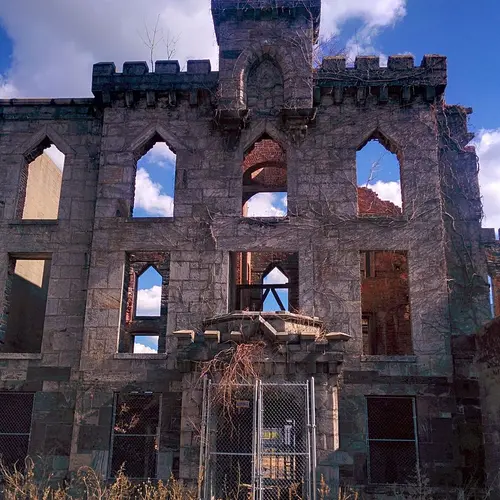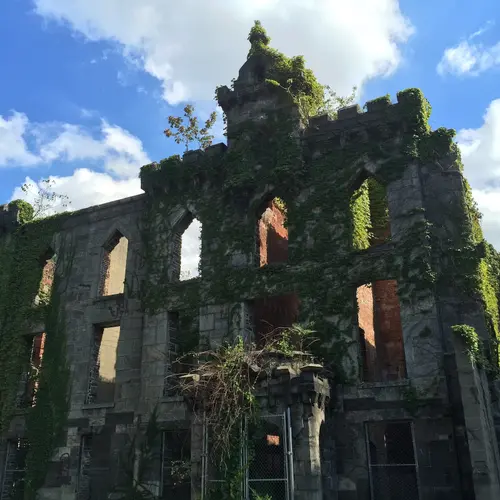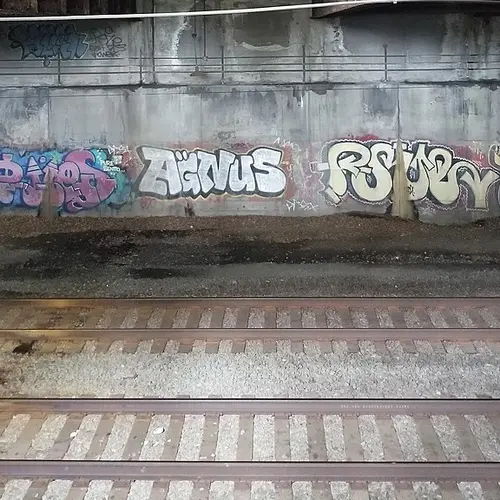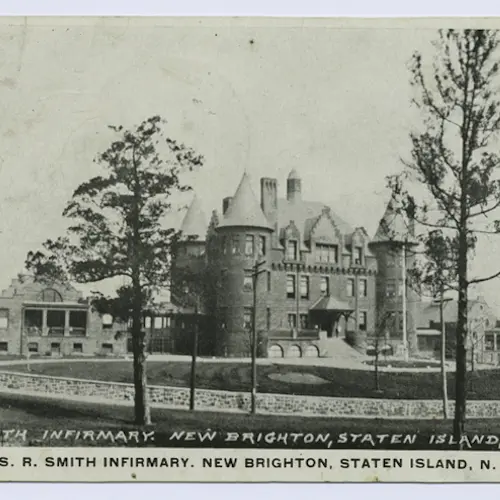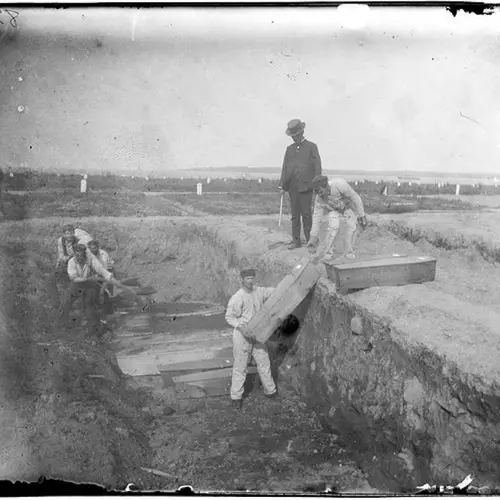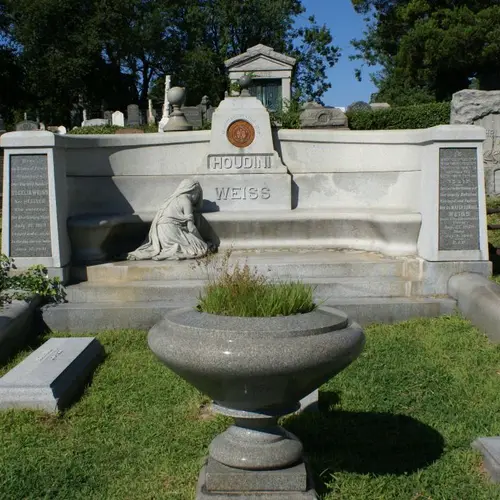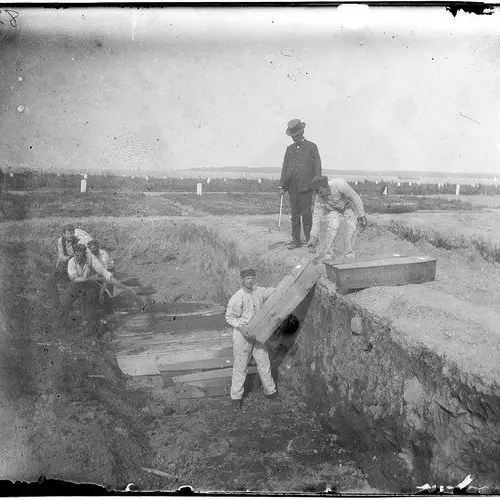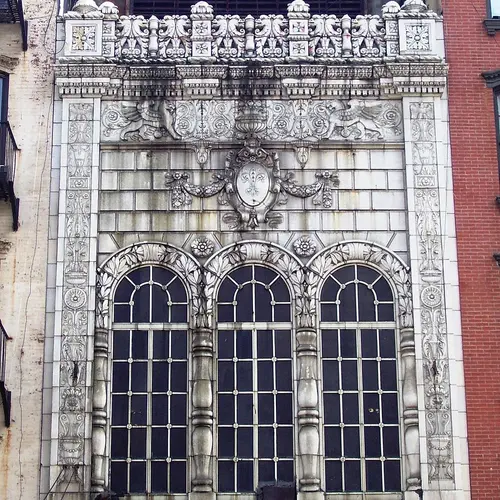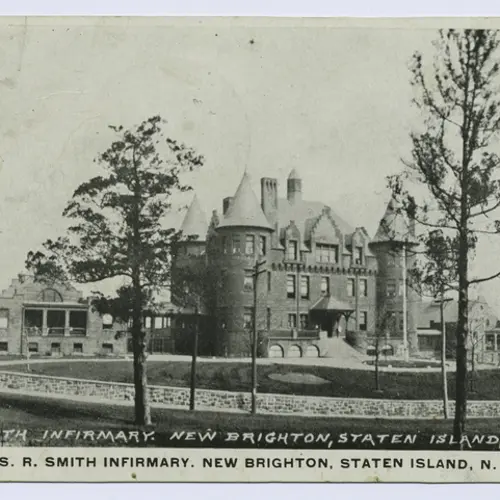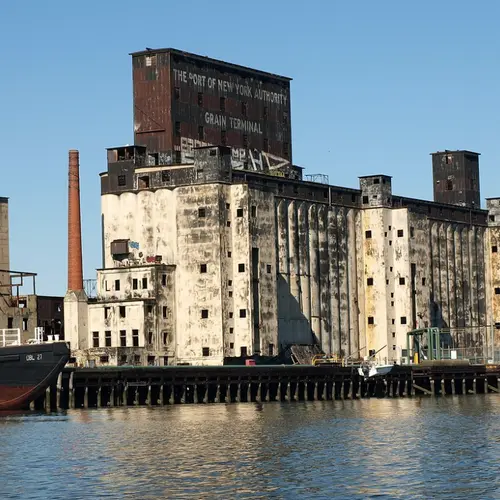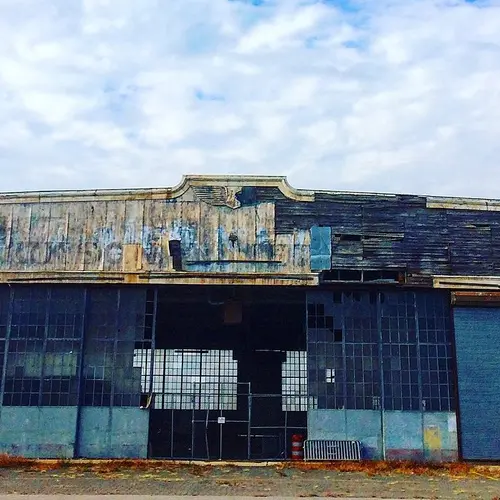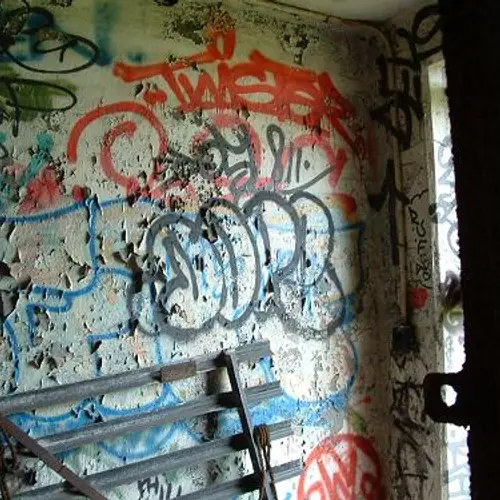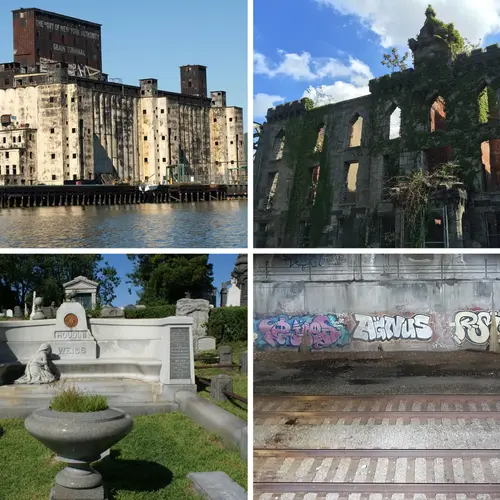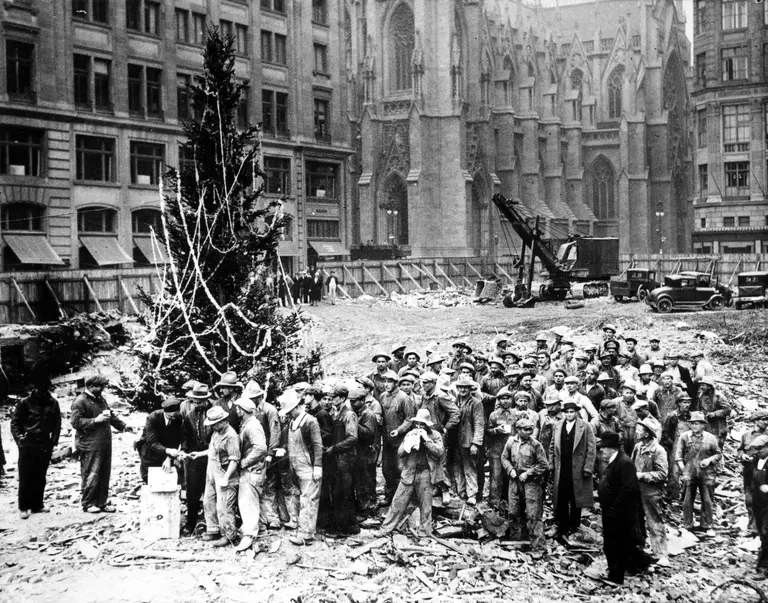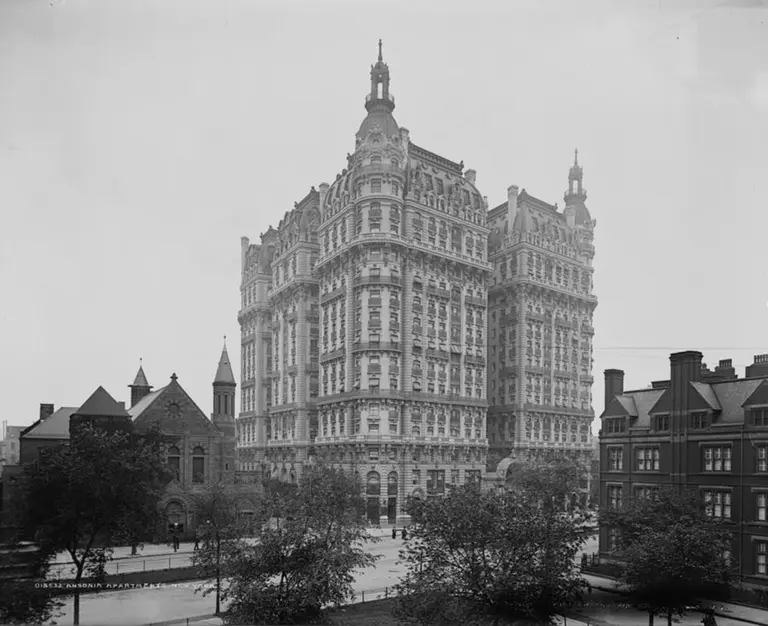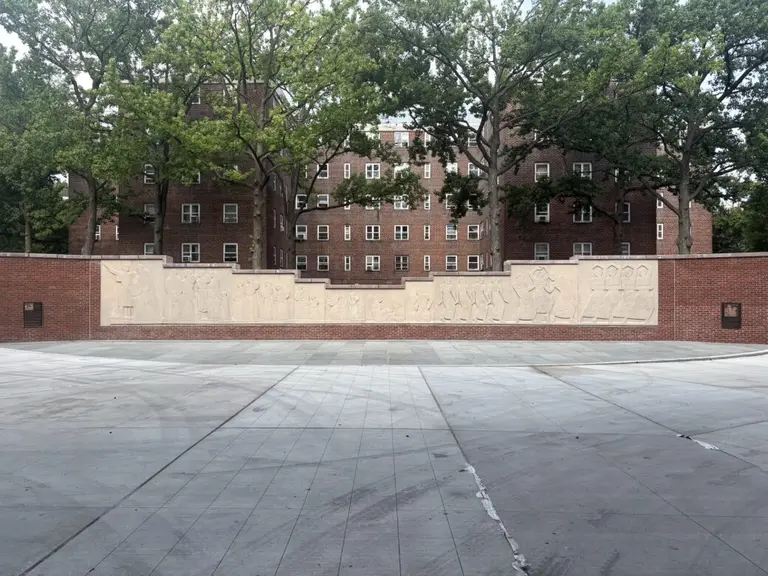8 of New York City’s spookiest abandoned sites
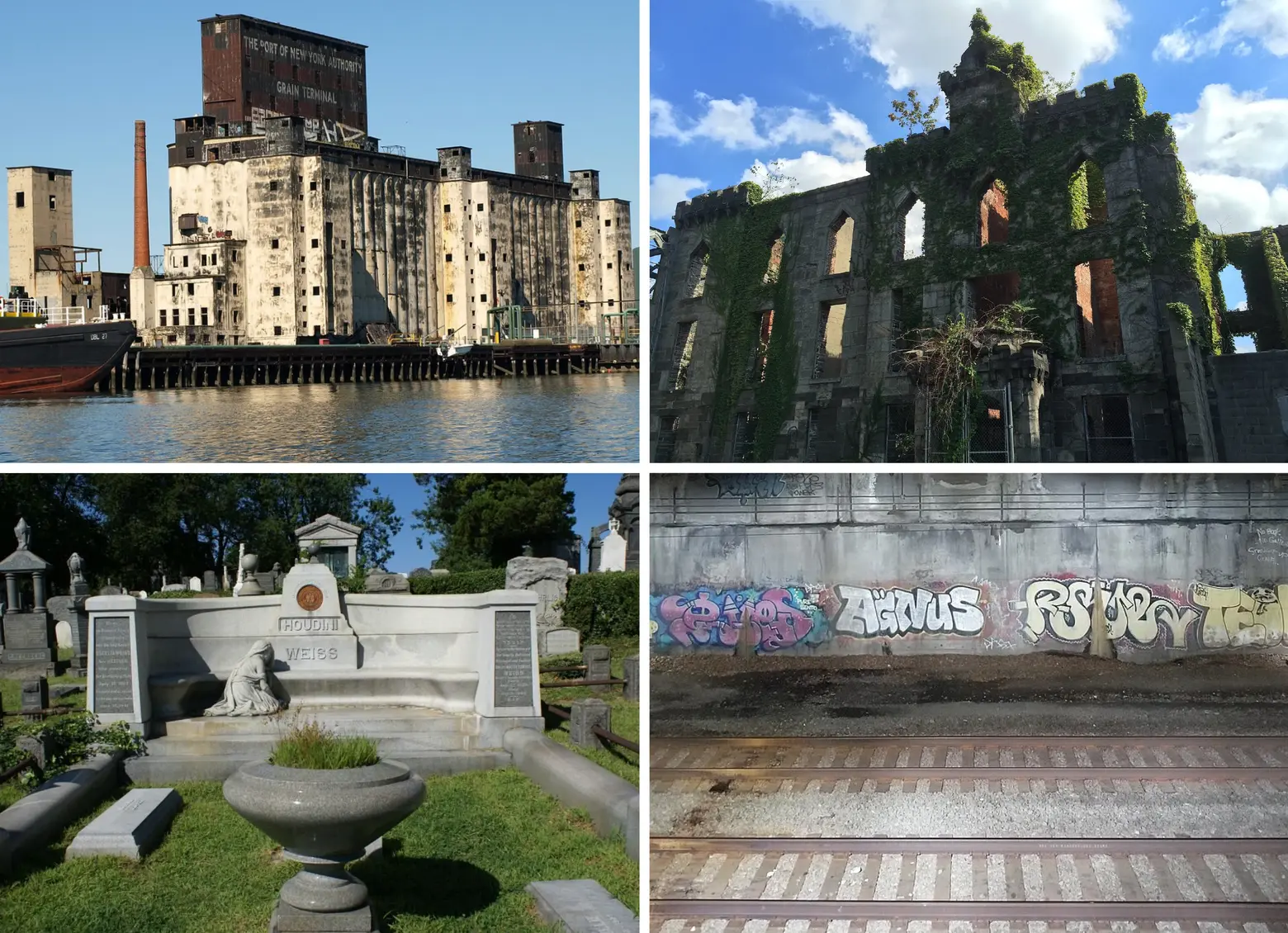
It often seems as if the jackhammer is the soundtrack to New York, as construction is a constant in this city. Given the frenetic pace of development in the five boroughs, it feels almost unbelievable that there are abandoned sites all over New York, left to go to seed as the steel skeletons of ever higher, newer, glassier structures rise around them. Here are eight of the most interesting abandoned sites in NYC, from the site of the city’s first airport to a defunct freight line.
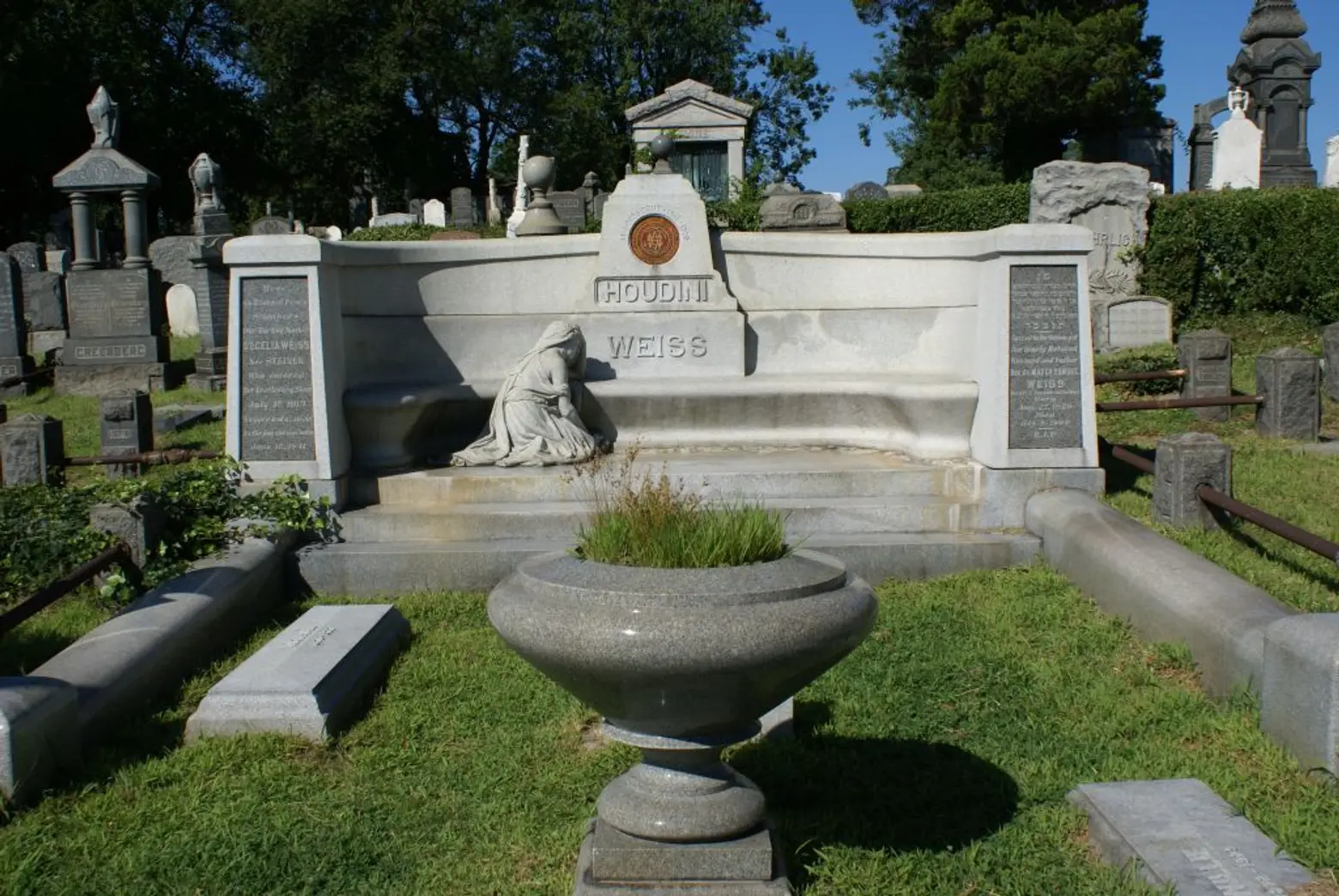
Houdini’s Grave, 2008, by Anthony22, via Wikimedia Commons
1. Machpelah Cemetery
There is only one grave that is well maintained in Queens’ Machpelah Cemetery, an otherwise totally abandoned site, and that one grave is the final resting place of Harry Houdini, who (fittingly) died on Halloween, and apparently couldn’t get out of being buried there. Machpelah is a Jewish cemetery within the Queens’ “Cemetery Belt.” The Belt stretches for over 2.5 miles. So much land was devoted to cemeteries in Queens because the borough remained rural so much longer than Manhattan did. A cholera epidemic in the mid-19th century, coupled with frenzied construction in Manhattan, meant that there were a lot of bodies, and not a lot of space. Queens, at the time, was once lousy with space.
Not anymore! When the cemeteries in the Cemetery Belt reached capacity, they lost their income source, as there were no more plots to sell. As a result, many of the cemeteries became abandoned. Such was the fate of Machpelah from the late ’80s onward. In fact, Machpelah’s wildly dilapidated cemetery office building was demolished in 2013. Today, there are only abandoned graves surrounding the one that’s still gleaming. It is a tradition to visit Houdini’s grave on Halloween.
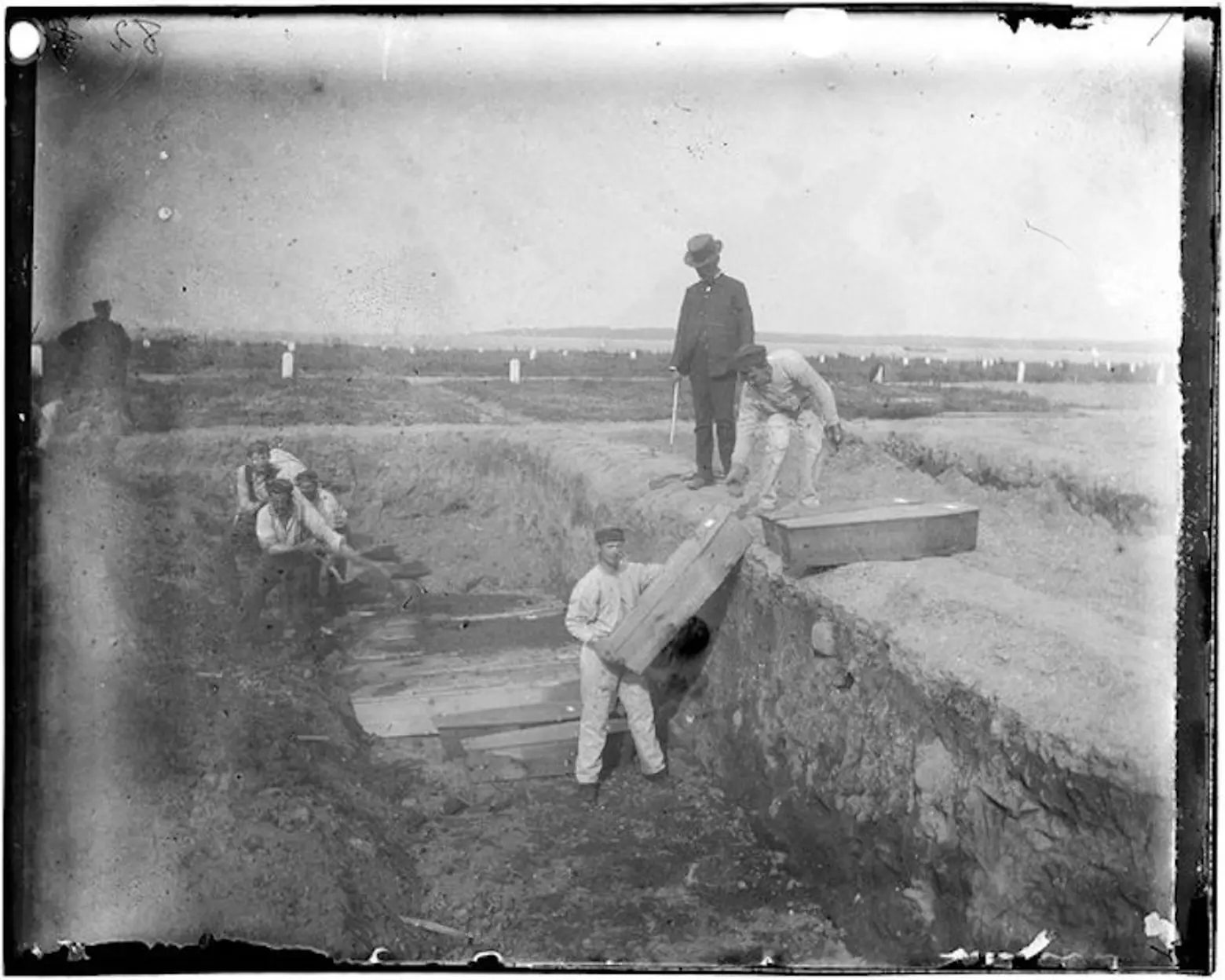
A trench on Hart Island, c. 1890, by Jacob Riis, via Wikimedia Commons
2. Hart Island Women’s Lunatic Asylum
Speaking of graveyards, Hart Island, off the coast of the Bronx, is the city’s last remaining potters’ field. Over one million people are buried in mass graves here, which are overseen by the NYC Department of Correction. The city bought the land for use as a public burial ground in 1869, and the island has had a host of haunting uses. It has been the site of a prison workhouse, a tuberculosis sanatorium, and a missile base, all of which are long gone, but the specter of the Island’s “Women’s Lunatic Asylum” still stands. Built in 1885, converted into a drug rehab facility in the ’60s, and abandoned in 1976, the building has been left to decay ever since.
It is difficult to get to Hart Island. The burial ground is almost entirely off-limits, and visitors can only reach a visitors’ gazebo near the ferry, one day a month – after making arrangements with the Department of Correction. The Hart Island Project, a local advocacy group aims to turn the island into a public park, in order to make the island accessible. The City Council is expected to pass legislation soon that would transfer the jurisdiction of Hart Island from the Department of Correction to the Parks Department.
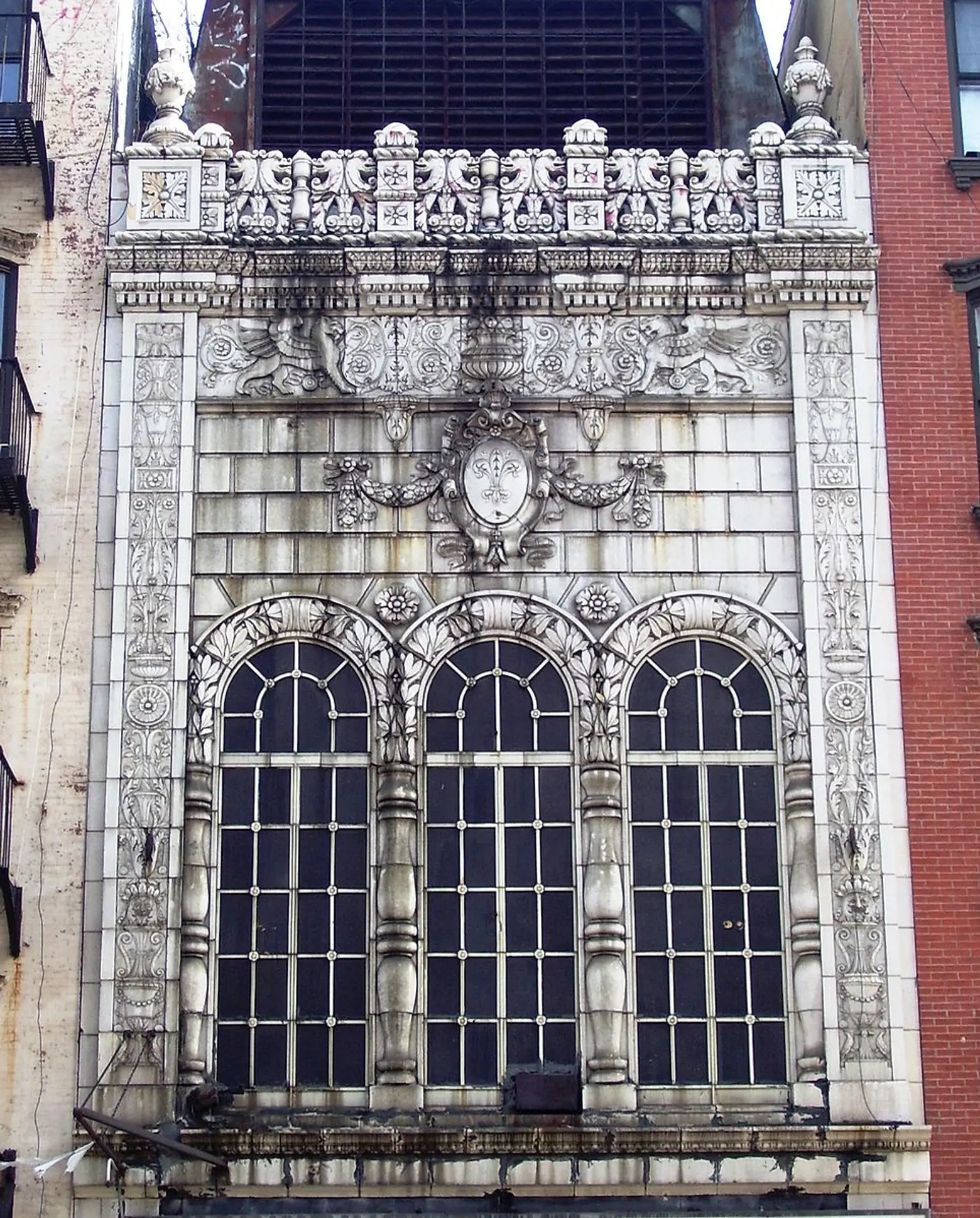
The exterior of the Lowe’s Canal, 2011, by Beyond My Ken, via Wikimedia Commons
3. Loew’s Canal St. Theatre
What appears at first glance to be a shuttered electronics shop is actually the abandoned shell of what was once the second-largest Wonder Theater in New York City. The Loew’s Canal Street Theatre, designed by famed theater architect Thomas W. Lamb, opened in 1927 with seating for 2,270 people – which was not enough to pack in all the crowds who wanted to catch a movie on Canal Street. – At the time, the Lower East Side was not only the densest neighborhood in the country but also home to the highest concentration of movie theaters in the United States. In fact, Marcus Loew himself, the man who created both the Lowe’s theater chain and MGM studios, grew up in the neighborhood!
The theater flourished through the 1950s but was sold in 1960. That year, the lobby became retail space, and the grand auditorium was converted into a warehouse. To make the transition, the theater’s seats were all removed, but the stately surroundings were left more-or-less intact. By now, they’ve decayed virtually untouched for 60 years.
Even more interesting, this isn’t just an abandoned theater. It’s an abandoned NYC landmark. The theater’s ornate white terra-cotta façade was landmarked in 2010. At the time, the local Asian-American arts group Committee to Revitalize and Enrich the Arts and Tomorrow’s Economy, or CREATE, put forward a plan to turn the Loew’s Canal into a new cultural and performing arts center, but the project never got off the ground. Instead, the building remains abandoned.
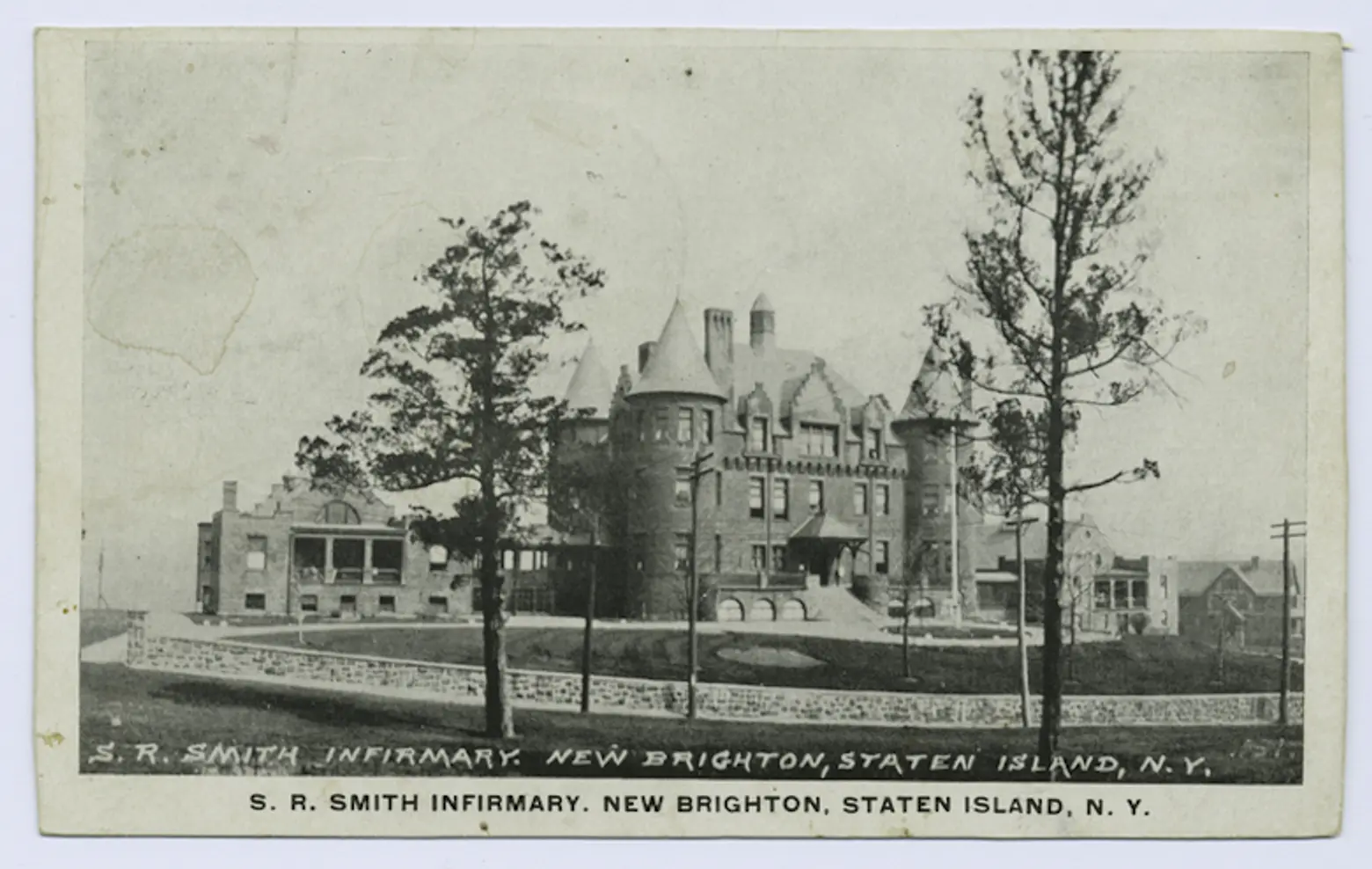
S. R. Smith Infirmary, via NYPL Digital Collections
4. S. R. Smith Infirmary
But not all abandoned buildings become landmarks. Landmark designation was floated in 1983 for Staten Island’s S.R. Smith Infirmary, but to no avail. The grand, turreted structure, fittingly built on Castleton Avenue, was completed in 1890. It was renamed The Staten Island Hospital in 1917 and abandoned in 1979. Now, the castle on Castleton is near collapse.
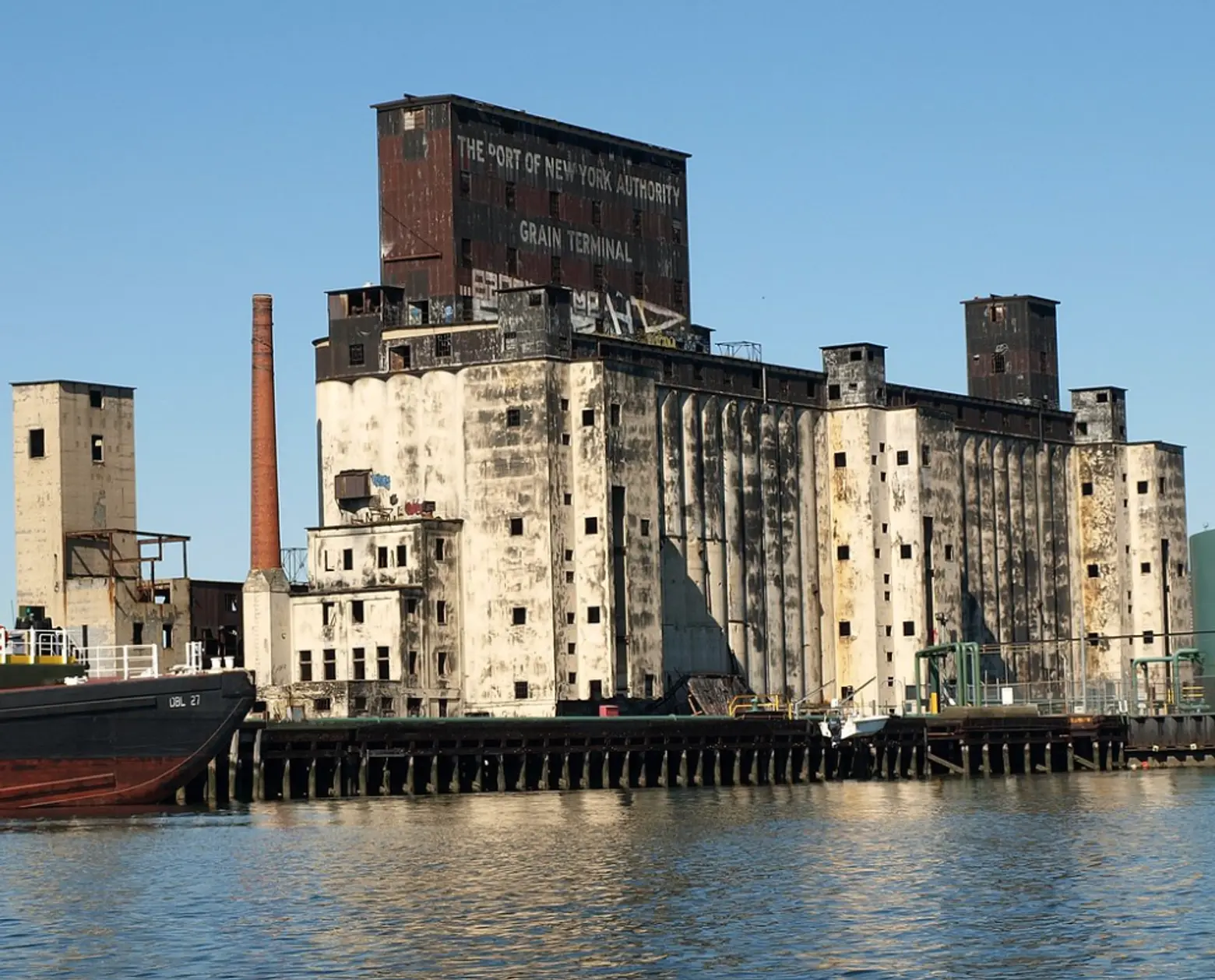
Red Hook Grain Terminal, 2008, by Jag9889, via Flickr
5. Red Hook Grain Terminal
The Red Hook Grain Terminal has stood abandoned at the mouth of the Gowanus Canal for more than 50 years. It was built in 1922 in an effort to revitalize the grain shipping industry in New York State, which had thrived with the opening of the Erie Canal in 1825 but had declined by the turn of the 20th century.
Dubbed Brooklyn’s “Magnificent Mistake,” the grain terminal was as majestic as it was pointless: The 12 story structure did nothing to revitalize the trade and was considered an immediate failure. The state itself gave up on the grain terminal in 1944, pawning it off on the Port Authority. That organization threw in the towel in 1965, and it has been abandoned ever since.
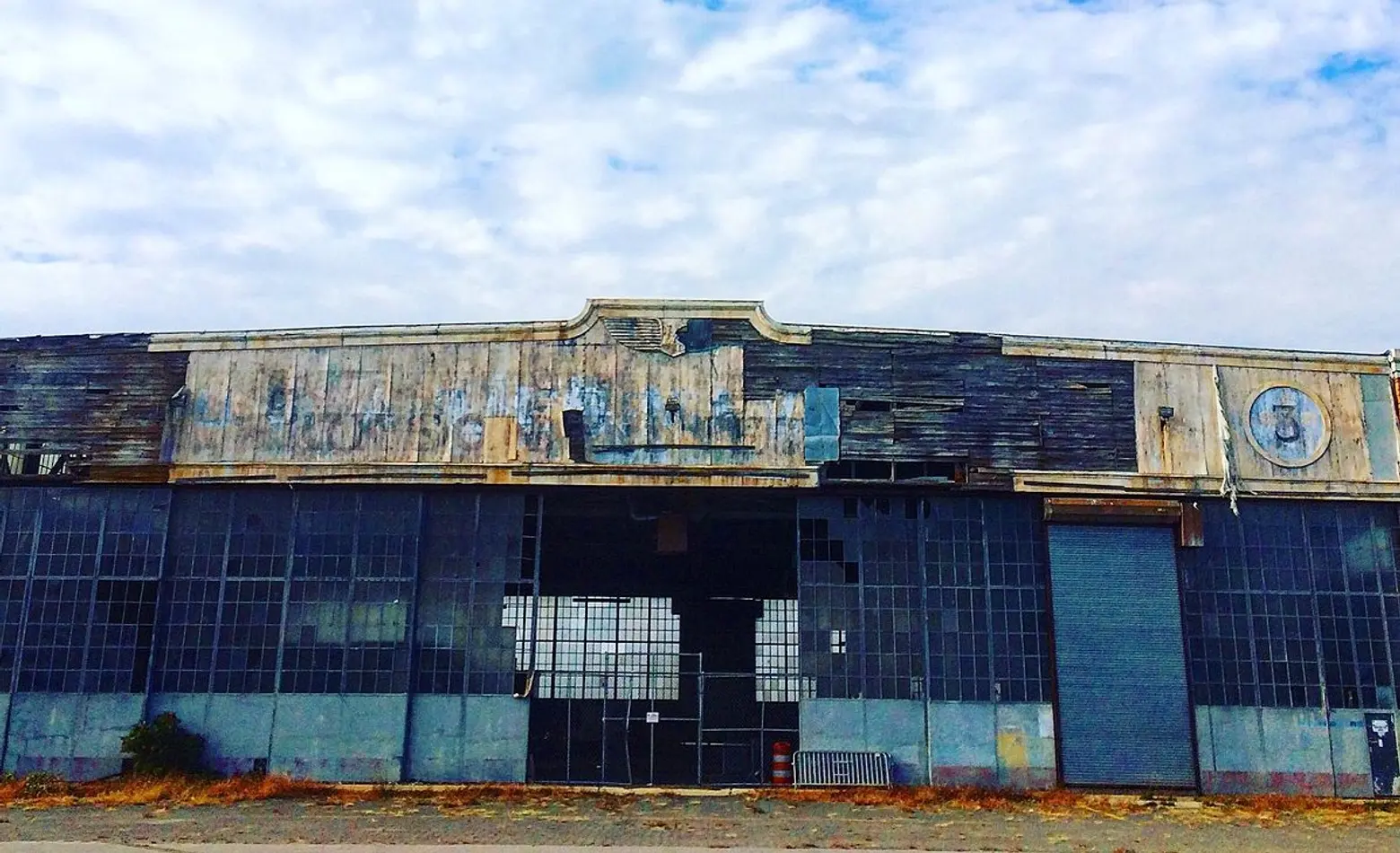
Floyd Bennett Field, 2016, by Clagares1, via Wikimedia Commons
6. Floyd Bennett Field
Floyd Bennett Field, in Brooklyn, was the city’s first airport (or, more accurately, airfield). It is named after Floyd Bennett, who piloted the first flight to the North Pole, on Commander Richard E. Byrd’s 1926 expedition. The success of the flight – whether Bennet and Byrd ever actually reached the North Pole – has been debated ever since.
The field served flyers liked Howard Hughes, and Douglas “Wrong Way” Corrigan – everyone’s favorite addled aviator — who was supposed to fly to California but ended up in Ireland, claiming he had gotten lost. The field was later used as a naval base before being decommissioned in 1972. Today, the sprawling space is partly in ruins and partly in use, sporting a campground and a sports center.
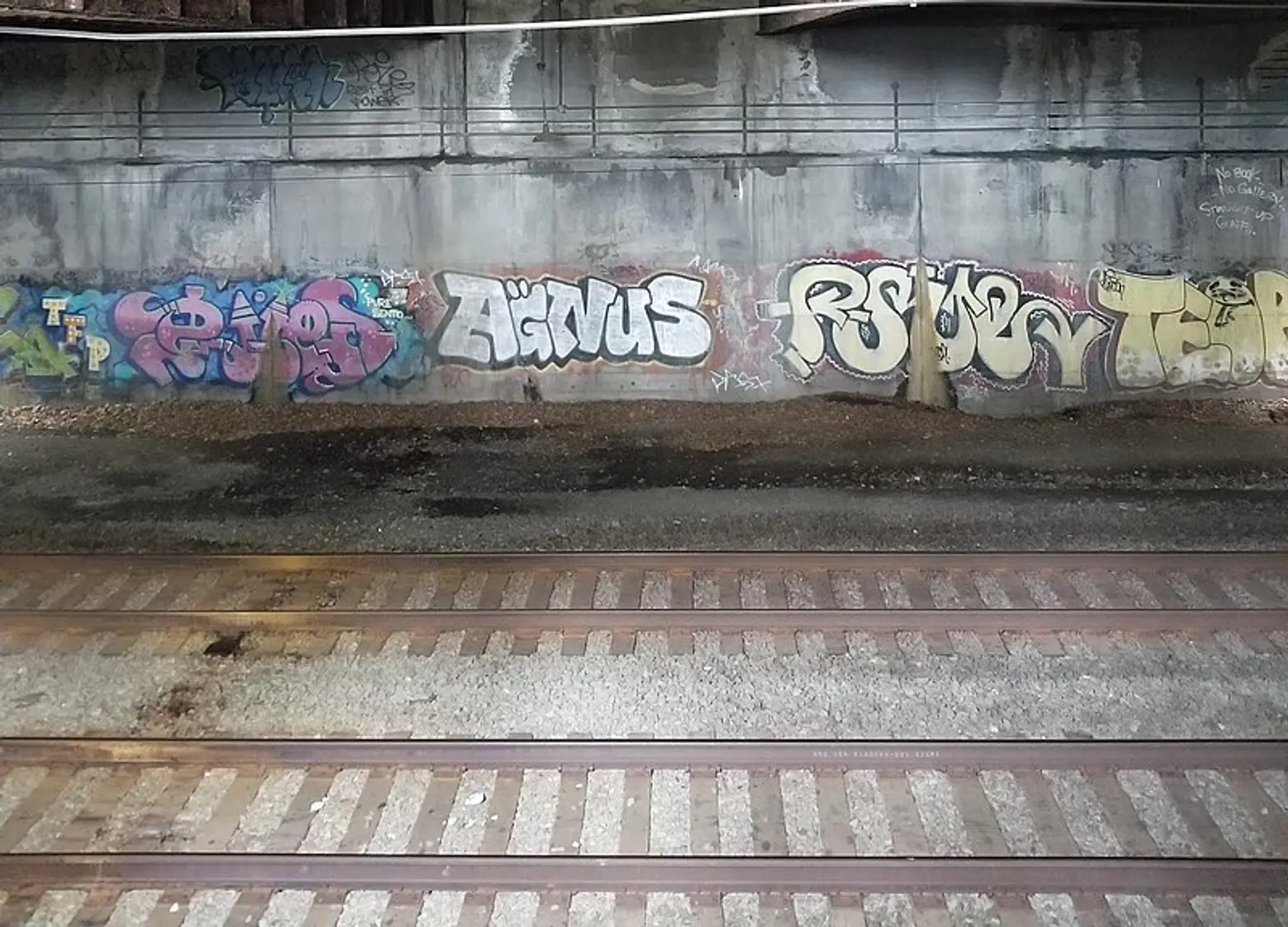
Freedom Tunnel; photo by Antigng, via Wikimedia Commons
7. Freedom Tunnel
The Freedom Tunnel under Riverside Park is an interesting type of abandoned space, in the sense that it was abandoned, and then the makeshift society that sprang up within its ruined state was itself abandoned. But that doesn’t mean the site, which is now an active Amtrak tunnel, isn’t still a challenge for urban explorers and graffiti artists. The tunnel was built in the 1930s when Robert Moses expanded Riverside Park over the exposed tracks of what had been the New York Central Railroad. By the 1980s, that freight line was defunct, and the tunnel became a shanty-town, home to upwards of 100 people by the early 1990s.
The Tunnel was tagged in years of graffiti and is named in honor of Chris “Freedom” Pape a graffiti artist who created some of his most notable work in the tunnel. Amtrak began using the Tunnel in the ’90s and actively expelled the residents, bulldozing the shantytown. But, graffiti art still flourished. Even when Amtrak tried to paint over, and destroy, graffiti art in 2009, the new layers of paint were simply tagged with new layers of artwork.
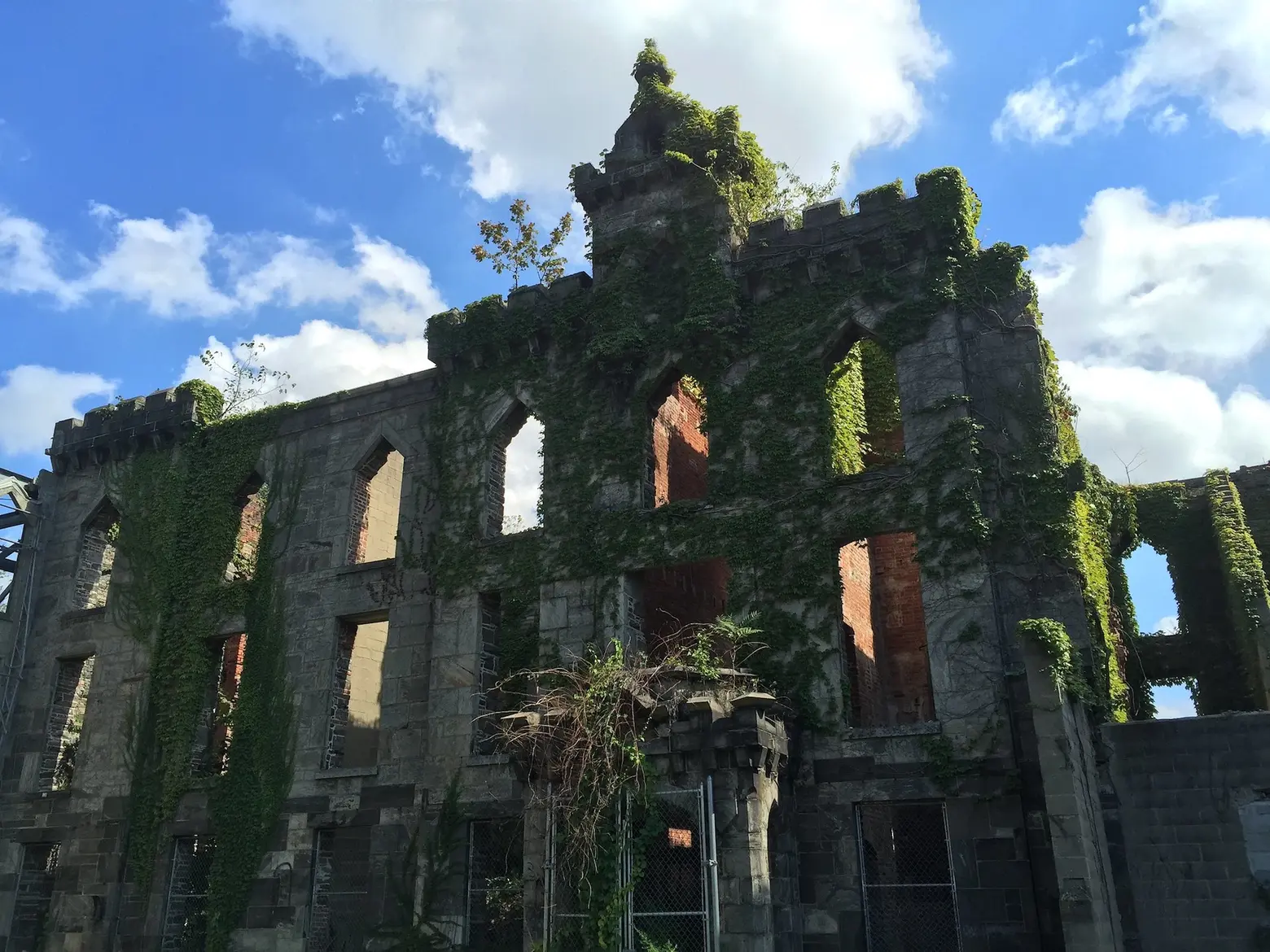
Renwick Smallpox Hospital; Photo by Ed on Flickr
8. The Smallpox Hospital on Roosevelt Island
The Smallpox hospital on Roosevelt Island, landmarked in its already ruined state in 1976, might be one of the most famous abandoned sites in New York City and is surely one of the most stunningly and sinisterly evocative. If you find the great decaying walls of the smallpox hospital gorgeous, then you’re in good company. The building was built to be beautiful. Designed by James Renwick, who also gave us St. Patrick’s Cathedral and Grace Church, the Smallpox Hospital on Roosevelt Island was actually the first of its kind in the country. Opened in 1856, it was the first major US smallpox treatment facility.
If the building looks to you like it’s rising from the earth itself, like a great stone ghost… it sort of is. The center building is made entirely from the Island’s own bedrock, which was quarried, cut and laid by prisoners from one of the island’s jails. At the time, the island was called Blackwell’s Island, but soon earned the name “Welfare Island,” due to the hospitals, insane asylums, almshouses and jails that were concentrated on the Island in order to separate the city’s sick and poor from the rest of its residents. The conditions that prevailed on Blackwell’s Island were so awful, that muckraking exposes by the like of Charles Dickens and Nelly Bly helped transform the way Americans thought about poverty, sickness, and mental health care.
+++
If you’d like to learn more about Blackwell’s Island, and its myriad abandoned histories, join FRIENDS of the Upper East Side Historic Districts and author Stacy Horn for Back to Black(well’s): A Book Talk on Wednesday, October 30th.
Horn will share insight from her book Damnation Island: Poor, Sick, Mad and Criminal in 19th Century New York, and join in a conversation about the island’s history with historian Judith Berdy, President of the Roosevelt Island Historical Society. Get Tix Here!
+++
 Lucie Levine is the founder of Archive on Parade, a local tour and event company that aims to take New York’s fascinating history out of the archives and into the streets. She’s a Native New Yorker, and licensed New York City tour guide, with a passion for the city’s social, political and cultural history. She has collaborated with local partners including the New York Public Library, The 92nd Street Y, The Brooklyn Brainery, The Society for the Advancement of Social Studies and Nerd Nite to offer exciting tours, lectures and community events all over town. Follow her on Twitter and Instagram.
Lucie Levine is the founder of Archive on Parade, a local tour and event company that aims to take New York’s fascinating history out of the archives and into the streets. She’s a Native New Yorker, and licensed New York City tour guide, with a passion for the city’s social, political and cultural history. She has collaborated with local partners including the New York Public Library, The 92nd Street Y, The Brooklyn Brainery, The Society for the Advancement of Social Studies and Nerd Nite to offer exciting tours, lectures and community events all over town. Follow her on Twitter and Instagram.
